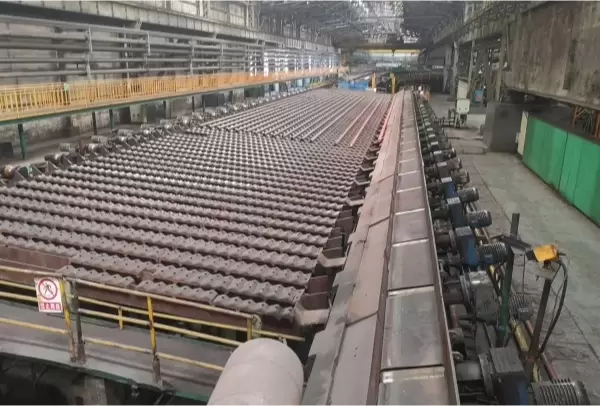Cooling beds play a crucial role in the steel manufacturing process, particularly in achieving uniform cooling of steel pipes. This article will explore the significance of cooling beds and how they contribute to the overall quality and efficiency of steel pipe production.
Understanding Cooling Beds
Definition and Purpose:
Cooling beds are specialized equipment used in the steel industry to cool down hot-rolled steel products, such as pipes, after they have been through the rolling mill. The primary purpose of cooling beds is to ensure uniform cooling of the steel pipes, preventing distortion and maintaining their desired mechanical properties.
Types of Cooling Beds:
There are various types of cooling beds used in steel pipe production, including walking beam cooling beds, chain cooling beds, and rotary cooling beds. Each type has its own advantages and is selected based on the specific requirements of the production process.
Importance of Uniform Cooling
Preventing Distortion:
Uniform cooling is essential to prevent distortion in steel pipes. When hot-rolled pipes are rapidly cooled, temperature differences can occur across the cross-section, leading to uneven contraction and resulting in distortion. Cooling beds provide controlled and gradual cooling, minimizing temperature differences and preventing distortion.
Maintaining Mechanical Properties:
Steel pipes require specific mechanical properties to meet industry standards and customer requirements. Uniform cooling ensures that the pipes achieve the desired hardness, strength, and ductility. Cooling beds allow for controlled cooling rates, enabling the pipes to reach the desired mechanical properties consistently.

Functioning of Cooling Beds
Controlled Cooling Rates:
Cooling beds are designed to provide controlled cooling rates by utilizing various cooling methods, such as air cooling, water cooling, or a combination of both. The cooling rate is determined based on the steel grade, pipe size, and production requirements. By adjusting the cooling parameters, cooling beds ensure that the pipes cool down uniformly.
Length and Design:
Cooling beds are typically long structures with multiple cooling zones. The length of the cooling bed allows sufficient time for the pipes to cool gradually. The design of the cooling bed, including the arrangement of cooling fans or water sprays, ensures that the cooling process is evenly distributed along the length of the pipes.
Advantages of Cooling Beds
Improved Quality:
Uniform cooling provided by cooling beds improves the overall quality of steel pipes. It minimizes the risk of defects, such as warping, cracking, or uneven hardness, resulting in higher-quality products that meet industry standards.
Enhanced Efficiency:
Cooling beds contribute to the efficiency of the steel pipe production process. By providing controlled cooling, they reduce the need for subsequent heat treatment processes, saving time and energy. Additionally, the uniform cooling achieved by cooling beds reduces the need for manual interventions and rework, further improving efficiency.
Conclusion
Cooling beds are indispensable in achieving uniform cooling of steel pipes. By preventing distortion and maintaining the desired mechanical properties, cooling beds ensure the production of high-quality steel pipes. Their controlled cooling rates and well-designed structures contribute to the efficiency and overall success of the steel manufacturing process.
The Importance of Steel Pipe Cooling Beds in the Manufacturing Process
